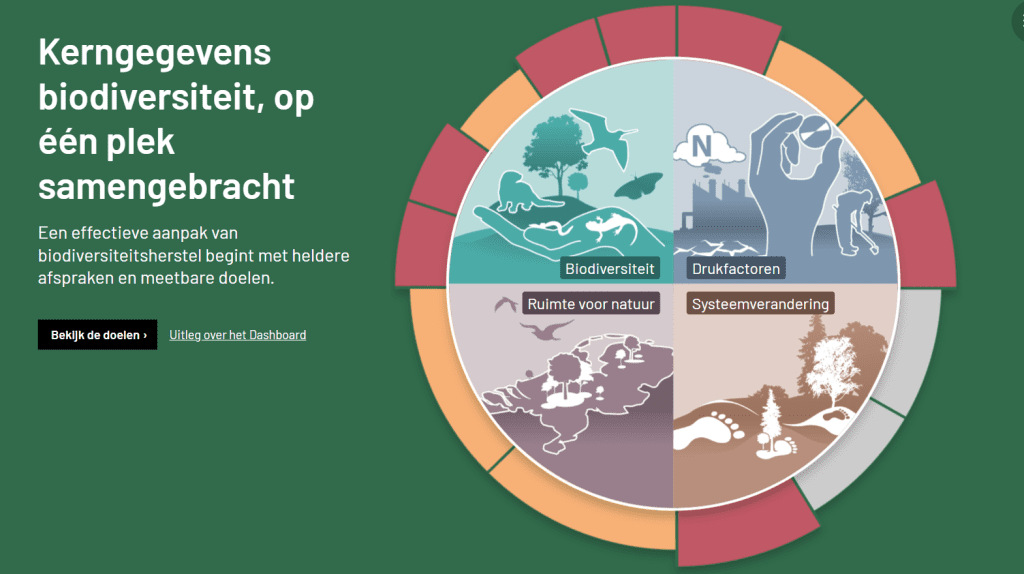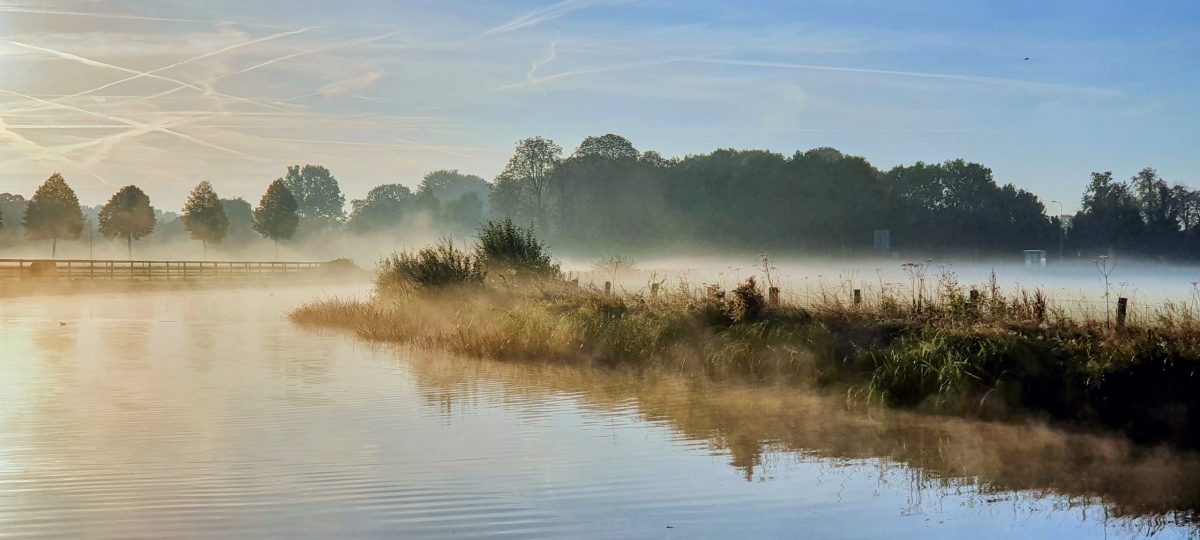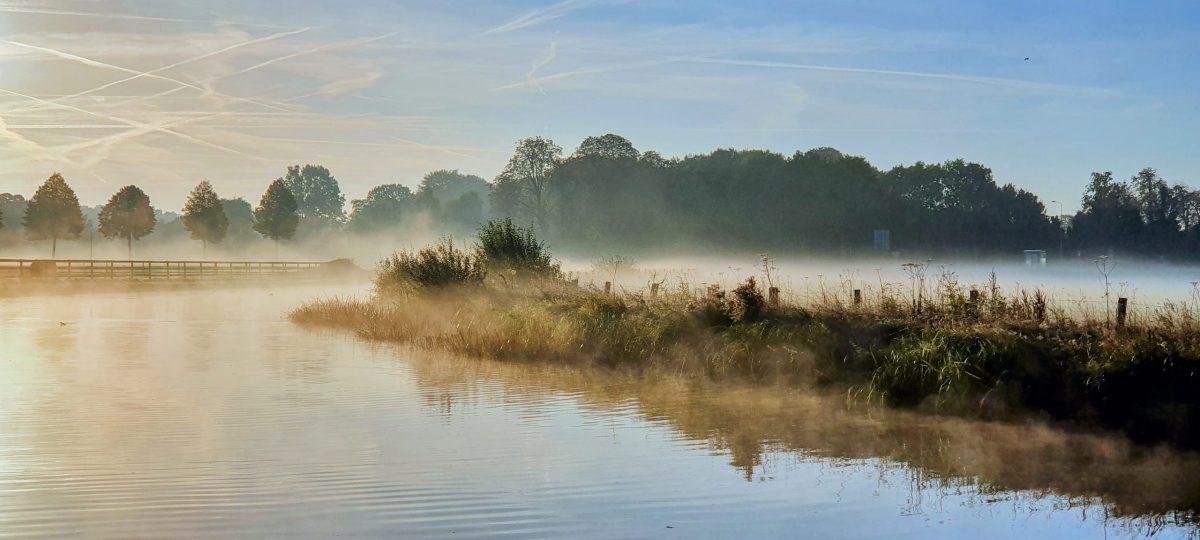Header photo: The Berkel River near Zutphen © Marten Schoonman, Naturalis
Visit the Dutch National Dashboard for Biodiversity
On May 22, 2024, the International Day of Biodiversity, the National Dashboard Biodiversity was launched. The online Dashboard provides an overview of the state of biodiversity in The Netherlands and shows whether the Netherlands is on track to meet its 2030 biodiversity restoration goals. Because it is a national Dashboard, it is only available in Dutch.
The Dashboard consists of four themes with a total of fourteen goals defined. For each goal, one or more indicators have been selected to provide insight into the status and progress of the goal.








